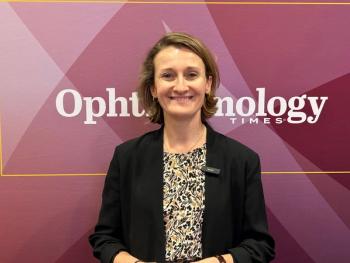
Retina Society 2024: Use of 0.05% chlorhexidine gluconate as antisepsis for intravitreal injections
CHG is an effective alternative antiseptic to PI and the cost is outweighed by increased patient comfort.
Reviewed by Sunir Garg, MD
A study of the stability, sterility, and cost-effectiveness of alcohol-free 0.05% chlorhexidine gluconate (CHG) for at least 30 days after the CHG is stored in 1-ml syringes compared with povidone iodine (PI) found that CHG is an effective alternative antiseptic to PI and the cost, while minimally higher, is outweighed by increased patient comfort, according to Sunir Garg, MD. He presented the results at the 57th Annual Scientific Meeting of the Retina Society in Lisbon. Garg is a Professor of Ophthalmology, Retina Service of Wills Eye Hospital, Thomas Jefferson University, Philadelphia.
He explained that PI causes discomfort and pain in a significant number of patients after intravitreal injections. A previous randomized controlled study by his group reported that use of CHG resulted in “lower pain scores, less corneal epitheliopathy, and no difference in positive microbial cultures.”1
In addition, CHG use has been associated with low rates of endophthalmitis when used for prophylaxis for intravitreal injections.2-4
In the study under discussion, CHG was aliquoted into 1-mL syringes and stored at room temperature and at 2-6 degrees Celsius for 30 days. The investigators tested the turbidity, pH, chemical stability with high-performance liquid chromatography (HPLC), and sterility on days 0, 3, 7, 15, 22, and 30.
They also compared the costs associated with CHG and PI. Dr. Garg explained that a 30-mL bottle of PI costs $16.73 but a 150-mL bottle of 0.05% CHG costs $92.65. However, a new bottle if CHG effectively has to be opened every day as it has a beyond date of 24 hours. This would make it financially prohibitive for most retina practices and use beyond 24 hours could have medicolegal concerns.
CHG long-term status
The results showed that 0.05% CHG remained stable and sterile after at least 30 days of storage in syringes.
Garg reported that the turbidity of all samples was below 0.5 nephelometric turbidity units, the pH remained between 5.0 to 7.0 in accordance with the manufacturer’s accepted range, CHG was stable at all time points at both temperatures, and no growth was observed in cultures.
A comparison of the weekly costs was $16.73 for 150 injections of PI.The cost using a new bottle of CHG based on the manufacturer guidelines is $463; however, when CHG use was extended over 30 days because of its demonstrated stability the cost was $23.16.
Garg and colleagues concluded, “0.05% CHG remains stable and sterile when assessing turbidity, pH, and chemical stability for at least 30 days when stored in syringes. One bottle of CHG can provide antisepsis for 600 injections/month for $92.65 compared to 4 bottles of PI for $66.92, which is a slight increase in cost for the potential benefit of improved patient comfort. This study demonstrates the risk management of using CHG for intravitreal injections.”
References
Ali FS, Jenkins TL, Boparai RS, et al. Aqueous chlorhexidine compared with povidone-iodine as ocular antisepsis before intravitreal injection: a randomized clinical trial. Ophthalmol Retina. 2021;5:788-796. doi:10.1016/j.oret.2020.11.008
Merani R, McPherson ZE, Luckie AP, et al. Aqueous chlorhexidine for intravitreal injection antisepsis: a case series and review of the literature. Ophthalmology. 2016;123:2588-2594.
Mishra AV, Tong CM, Faes L, et al. Comparison of endophthalmitis rates after alcohol-based chlorhexidine and povidone-iodine antisepsis for intravitreal injections. Ophthalmol Retina. Published online August 21, 2023. doi:10.1016/j.oret.2023.08.007
Oakley CL, Vote BJ. Aqueous chlorhexidine (0.1%) is an effective alternative to povidone-iodine for intravitreal injection prophylaxis. Acta Ophthalmol. 2016;94(8):e808-e809. doi:10.1111/aos.12981
Garg SJ, Durrani AF, Momenaei B, et al. Long-term stability, sterility, and cost-effectiveness of chlorhexidine gluconate as antisepsis for intravitreal injection. Presented: 57th Annual 57th Annual Scientific Meeting of the Retina Society in Lisbon, September 11-15, 2024. Session; Thursday poster program, poster 38.
Newsletter
Don’t miss out—get Ophthalmology Times updates on the latest clinical advancements and expert interviews, straight to your inbox.



















































.png)


